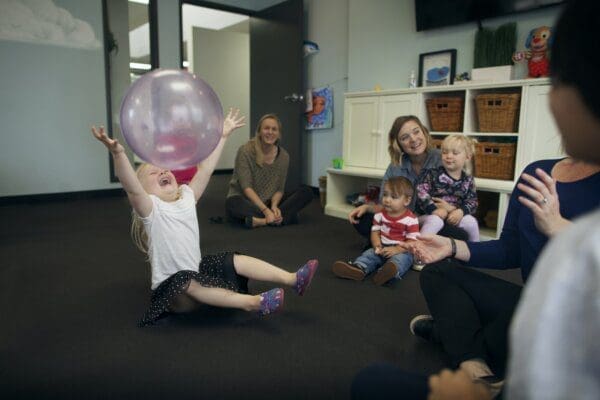Leadership in the Early Years Sector
Leadership and management in any sector can be challenging. The expectation to motivate, inspire, support, coach, guide and train other humans to perform can be complex. Early Years leadership also has multi-dimensional stakeholders, with the children in our care, parents and Ofsted all with their views on what the leadership and management of the setting should be.
What other sector in the world gives you the freedom to play, to love and to laugh whilst building future generations’ brains? Not many! There are a plethora of early years leadership and management courses available, both in person and online. Also, there is a range of educational articles, evidence-based research, and development programmes that cover early years leadership and management topics.
With all this support and information available, why are so many people leaving the sector? Why do we face recruitment and retention challenges? What is it about early years leadership and management titles that educators strive to hold?
Jump to Menu:
- 1- The Development of Early Years Leadership
- 2- What are the 4 Basic Leadership Styles?
- 3- What is Leadership in Early Years Settings?
- 4- How Can I Be a Good Leader in the Early Years?
- 5- What is the Role of an Early Years Leader?
- 6- What Makes a Good Leader in Childcare?
- 7- What are the Leadership Styles in Early Childhood Education?
- 8- Why is Leadership Important in Early Learning and Childcare?
- 9- What Makes a Good Preschool and Nursery Manager?

1) The Development of Early Years Leadership
I was fascinated by this topic. The covid 19 pandemic shook the sector and highlighted the fragility of business models. Also, the dedication and determination that leaders, managers and educators bring daily to their roles was emphasised. In my role as coach and trainer, I am often asked questions about early years leadership and management. Therefore, I have built a portfolio of professional development programmes both online and in person to support the sector and build knowledge and skill capacity. This is because I truly believe that the quality of the education that the team receive directly impacts the quality of the education we give to the children.
I will explore some of those commonly asked questions and give an insight into leadership within the early years. I will draw upon my empirical research that I have carried out during my time as a childminder and then nursery manager and owner.

Let us start with understanding some generic business studies and understanding of leadership styles. People often display different leadership styles in different situations. As you read the descriptions, think about how your leadership style differs with parents or your peers than with external stakeholders such as Ofsted or other regulatory organisations.
Action: For even more useful content on leadership, check out our ultimate guide on Leadership Skills.
2) What are the 4 Basic Leadership Styles?
German-American psychologist Kurt Lewin is most famous for describing the 4 main types of leadership styles in business. They are:
- Autocratic
- Democratic
- Laissez-faire
- Transformational
The autocratic leadership style can easily be summed up by the command, “Do as you’re told.”
The democratic style is also known as Participative Leadership. This approach involves gathering input from your subordinates and team members. Then, everyone has a chance to contribute to the decision-making process. Democratic leaders are still the decision-makers, but their approach allows others to feel engaged and have a stake in the outcome.
Laissez-faire involves empowering employees, being hands-off, and trusting them to accomplish the task at hand without constant questions or micromanagement. Laissez-faire leaders leave decisions to their employees while staying available to provide feedback when necessary.
Transformational Leadership involves developing a grand vision and rallying your employees around it. Under this style, the team is eager to transform and evolve. They wish to do this both personally and professionally in order to achieve the overall goal. With the organisation and employees aligned, teams working under a transformational leader are united for a singular cause, and willing to commit their effort, time, and energy to the organisation.
Sticky Learning ® is 7 times more effective than 1-day training courses. Plus, you will get a Chain of Evidence proving your Return on Investment. Discover soft skills training that changes behaviours long term.

3) What is Leadership in Early Years Settings?
To best understand what leadership is in the early years, I would like to start with understanding the differences between the frequently used terms; ‘early years leader’, ‘early years manager’, ‘EYFS leader’ and ‘EYFS manager’. In short, managers solve problems, leaders create momentum.
In early years leadership is about paving the way, leading the charge and creating a vision for the future that is clear to the parents, the children, the team and Ofsted. Leadership in early years settings is about creating an ambitious vision for the future that is inclusive and diverse, for everyone. In an ever-changing world like early years, a great early years leader must have the ability, skills, knowledge and foresight to be able and willing to anticipate roadblocks and dismantle them before they even happen.

That way, amazingly talented educators can keep innovating and focusing on delivering ambitious and culturally rich learning environments for children. Early years leadership provides the team with a genuine culture of support, fun, empowerment, and trust that allows them to create magic on their own.
4) How Can I Be a Good Leader in the Early Years?
Being a good leader in the early years starts with knowing and understanding your strengths and motivation. Leaders within the early years who are outstanding understand where biases may be influencing their decisions. They know what support, knowledge, skill or behaviours they need to change to grow.
Leadership is a set of behaviours used to help people align their collective direction, to execute strategic plans, and to continually renew an organisation.”
A good leader in the early years understands how to motivate people to work to their strengths. They know that to get the best from people you need to understand what makes us unique. You need to know what drives us to want to turn up, day in, day out and be the best educator we can be.
Leadership Attributes
A good leader in early years showcases the following leadership attributes:
- Being supportive.
- Operating with a strong results orientation.
- Seeking different perspectives.
- Solving problems effectively.
- Understands boundaries and applies them effectively .
(source: McKinsey’s analysis of academic literature – Decoding leadership – what matters)
To be a good early-years leader it takes more than just being a great educator. There is so much to learn about how to lead individuals as well as how to lead teams effectively.
The transition to EYFS leadership often happens by default! One day you are planning for young children, the next you are sitting in an office with a new workload, new priorities and new stressors! Investing time in online courses or leadership and management awareness training will ensure that you upskill yourself in the complexities of leadership. In turn, you can create momentum and motivation in your team so they want to follow you.

My advice, be open and honest, be vulnerable and set a course to get things right, rather than being right! Identify your strengths and understand how to help others to understand theirs. Also, create systems that allow you to leverage your own time effectively so that you can invest into developing your team – work with children!
Plan your time so that you are still working the actual job. This will give you a level of leadership understanding and allow you to relate to the teams in real terms. Stay visible to your team yet have clear boundaries – your door does not always need to be open.
5) What is the Role of an Early Years Leader?
It could be argued that it is this lack of high-quality mentoring or observable behaviours that our early years’ leaders miss out on that is having an impact on recruitment and retention in the early years as well as directly impacting wellbeing. The role of the early year’s leader is to keep the teams focused on the ‘why”. Each setting is unique, even when part of a larger organisation, settings are individual micro-cultures that are the sum of their parts.
As an early years leader, it is your role to have the big vision for the setting clear in your mind. Hold clear how you intend to teach the children, then have the skills to be able to articulate how you will lead the team to implement that learning. Finally, be able to measure and share the impact that the teaching and learning are having on the children. The early year’s leader is the custodian of the curriculum. They inspire the team to reflect on what is working well, what they could improve and challenge the status quo.
Practice Adaptability
An early years leader wears many hats, interchanging from one to the other often in one short meeting. Managing your own time is paramount to being an effective leader. Your team will do what you do, not what you say you do! To create a culture of work and life balance where well-being is a priority, as an early years leader you must be a living example of this. Burnout is not a badge of honour. Leading from a state of being overwhelmed and stressed will not allow you to work creatively or at your best.
Mastering yourself and having an awareness of where and how you feel stress in your own body, and how you regulate yourself, will allow you to choose to be deliberately calm in the face of challenges. What got you to where you are will not always get you to where you want to be! The role of the early years leader is to be committed to professional development. They need to lead the team into a culture of learning, reflecting and being curious in every interaction. Not settling for “this is how we do things here”.
6) What Makes a Good Leader in Childcare?

A good leader in childcare can practice ‘dual awareness’. Dual awareness integrates our internal and external experiences, the moments that we have lived and the lessons that we have learned. Understanding that failure is a key driver to success. A good leader in childcare can become fluid and respond to challenges with an intentional choice instead of being limited by their old success models. With deliberate calm, anyone can lead and learn with awareness and choice to realise their full potential, even in times of uncertainty, complexity, and change. Giving the team time and presence, as we offer to the children, as they develop new knowledge skills and behaviours are key to becoming a good leader in childcare.
7) What are the Leadership Styles in Early Childhood Education?
As we explored earlier, Lewin gives us the basic definitions of leadership styles in business. The leadership styles in early childhood education include all of Lewin’s styles, however, there are additions:
Leader-Follower
This leadership style is used to influence people to comply and not to think for themselves. This can be known as micromanaging. The leader-follower style puts the followers’ needs last as they seek to humbly serve those around them. This selflessness is often to the detriment of the follower’s mental health and well-being. Whilst they are willing to be led, we know in early years that the ability to be agile and fast-thinking, needs a team of people who are self-motivated and can be leaderful – more creative thinking, less robotic.
Intent-Based Leadership (David Marquet)
This style of leadership encourages the entire team to be seen as leaders. This happens by giving them autonomy and confidence to perform their job within the boundaries of clear expectations. This environment helps people feel valued and proud of being part of something bigger than themselves. When the team is inspired they feel like they can take responsibility and have the authority to rise to the occasion when necessary.
Distributed Leadership
The sharing of leadership responsibilities so that the entire team can take an active lead. This particular leadership style works well in early years leadership and management of settings. This is because it is a collaborative, rather than competitive, way of leading the team.
8) Why is Leadership Important in Early Learning and Childcare?

The Early Years sector has always been fast-paced and ever-changing. The speed of change and its increasing complexity accelerates daily. Early Years leaders are tasked with performing outside of their familiar comfort zones both in their personal and professional lives. This requires us to adapt, to wearing many different hats, often changing at the moment and never stopping to reflect or calm.
The conditions that make adapting so important in these moment-by-moment interactions can also trigger fear, leading us to resist change and default to reactive behaviour. This is known as the ‘adaptability paradox’. When we most need to learn and change, we stick with what we know, often in ways that stifle learning and innovation.
Have you ever heard yourself say ‘it’s what we do here’ or just do something because you have never had the time to stop and reflect on why you do this? To avoid this trap, leaders must become proactive so they can lead ahead of the curve. This is why, leadership is imperative to delivering high-quality childcare, education and customer care in these changing times.
9) What Makes a Good Preschool and Nursery Manager?
A good preschool and nursery manager understands when to lead with their head and when to lead with their heart. They know that even the best intentions sometimes, on reflection, could have been executed or delivered better. In fact, they know that everything can be done better. They have a drive for excellence.
A drive for excellence is, despite what you may think, the opposite of perfectionism. Drive takes you on many directions and course corrections through failure whereas perfectionism does not allow for failure. Working with babies and young children never goes to plan. That being said, you always need a plan. It is the ability to see that a drive for excellence gives you room to fail in the safety that the lessons are visible and there to be built upon.
Being a Good Preschool Manager
As a good preschool and nursery manager, you will:
- Increase your self-confidence and effectiveness.
- Learn how to succeed even when you are under pressure .
- Understand your strengths as a leader and how to use them to deliver high performance .
- Experiment with different leadership models.
- Develop your plan to become your best leadership self.
- Build on the insights from your profiling and 360-degree feedback.
Final Thoughts
To succeed in leadership and management within the early years and to be confident to deliver the EYFS it is critical to examine the personal capacities of your team. They are those who intentionally develop the leadership capacities of others. Look at who leads others in your setting. Have you invested time into them so that they understand how to manage their work priorities? Do they know how to inspire and support others to do the same?

Leadership in early years settings is much more than the common image of a passionate, charismatic, innovative Nursery Manager who can charm Ofsted and their parents. The ability to lead, inspire, direct, and teach others must shine through. As preschools and nurseries grow, their ambitions are often undermined by a leadership deficit.
A strong, leaderful educator or room manager is given the promotion to manager without support or training. However, the gap between performance and potential can be bridged by addressing this challenge directly through targeted capacity-building programs. Mentoring and strengths-based awareness in a culture where everyone is supporting each other for the best outcomes for the children, underpinned by a strong willingness to participate in continued professional development build leaders in early years.




